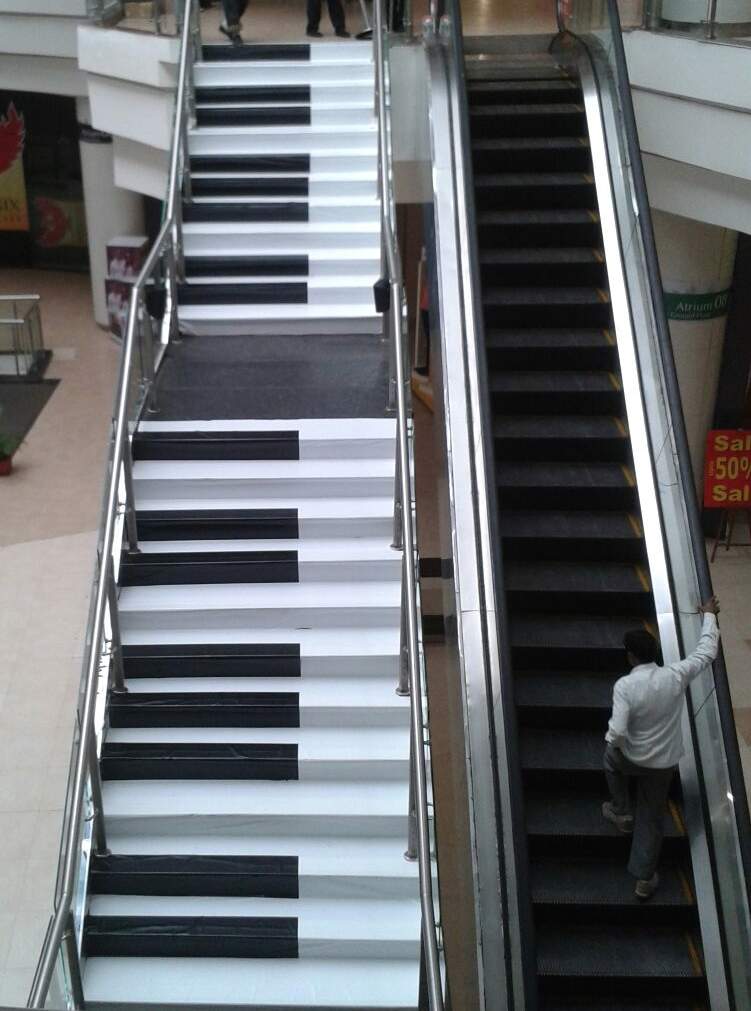
Figure 1: Piano Stairs
An interesting initiative by “Fun Theory” Project was introduced in order to encourage people to use stairs that resembled to a piano so that it could keep them away from the escalators. Later, the concept gained popularity and was implemented in various cities. In an effort to work on the same, Rituparna Matkar, a Development Executive by profession along with his team went on to build the Piano Stairs for the Phoenix Market City in Pune during Christmas. Under this DIY project, the stairs were painted in black and white carrying the look of a giant acoustic piano. There were sensors attached to them and whenever people stepped on them, it triggered the system to produce MIDI notes.
Before proceeding with the project, Rituparna was quite clear about the basics and the work flow but he tried to use various components so as to test what will be the best way to accomplish the task. As part of the experimentation, the project initially utilized LDR (Light Dependant Resistors), followed by ultrasonic and infrared transceivers. But in each of these cases, certain issues popped up questioning the reliability and consistency of the project. The LDR wasn’t effective due to the change in ambient light while the other two had scaling issues.
Finally, the team settled with capacitive touch sensor that could efficiently detect a person on the stairs thereby triggering the notes to play. For this, the main components required in the project include the following:
- Tah (Arduino compatible prototyping board)
- MPR121
- VMPK (virtual MIDI piano keyboard)
- Raspberry Pi
The data processed by Tah and MPR121 was sent to the Raspberry Pi in order to play the notes. However, the serial processing of data didn’t make the task look like a real time thing and it was realized that the MIDI output port needed to be configured to Pi’s output. As a remedial measure, the team opted for a VMPK but since it didn’t work with a Pi, they had to use a Macbook. So the final deployment apparently involved the VMPK running on Macbook which was in turn hooked to the Tah and MPR121.
At the deployment stage, a team consisting of 8-10 people was appointed to gather in the mall and put up all the necessary tools in the required manner which took several hours to complete. The end result was a 35-step staircase painted in Black and White looking much like a grand acoustic piano. Consequently, most of the people who visited the mall got excited and were happy to avoid the escalators just by the side. This led to a considerable increase in the number of people using stairs.
Filed Under: Reviews


Questions related to this article?
👉Ask and discuss on Electro-Tech-Online.com and EDAboard.com forums.
Tell Us What You Think!!
You must be logged in to post a comment.